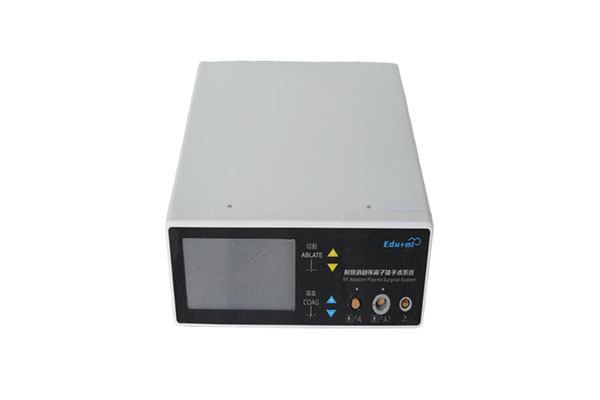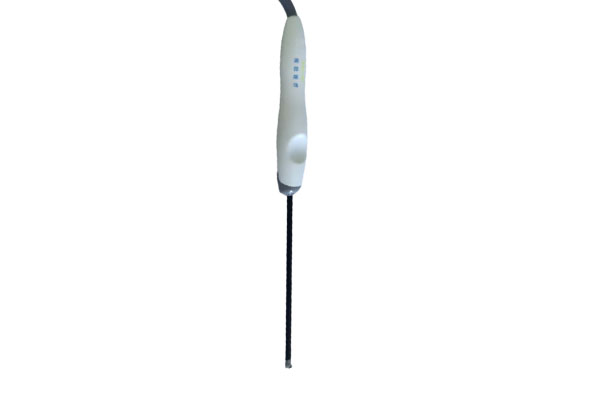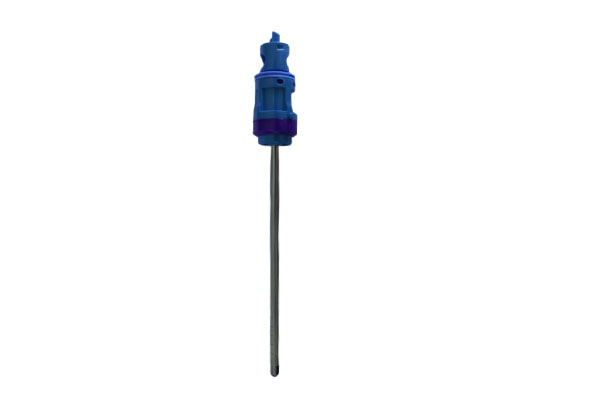In medical operations, how can disposable radiofrequency ablation plasma knives ensure accurate cutting of target tissues while minimizing damage to surrounding healthy tissues?
Release Time : 2025-07-11
With the development of minimally invasive surgical techniques, disposable radiofrequency ablation plasma knives are increasingly used in surgical operations due to their high precision and low invasiveness. This advanced tool not only enables precise cutting, but also effectively reduces damage to surrounding healthy tissues. This article will explore how the device ensures accuracy and safety in actual operations without involving its specific working mechanism.
1. Advanced sensors and real-time monitoring systems
In order to ensure accurate cutting of target tissues, disposable radiofrequency ablation plasma knives are usually equipped with a variety of sensors and real-time monitoring systems. These systems can continuously monitor the position, temperature, and tissue response of the blade during surgery. For example, some high-end devices integrate optical sensors that can capture tissue changes around the blade in real time, helping doctors to more accurately locate and cut the target area. In addition, the temperature control system is also an important part of ensuring surgical safety. By accurately controlling the operating temperature of the blade, non-target tissue damage caused by overheating can be avoided. Modern equipment often has an automatic adjustment function. When the temperature is detected to be out of the preset range, it will automatically adjust the power output or stop working to protect the surrounding healthy tissue.
2. Intelligent navigation and image-guided technology
In complex surgical environments, intelligent navigation and image-guided technology provide great convenience for doctors. With the help of three-dimensional imaging data (such as CT scans or MRI images) obtained before surgery, doctors can use the navigation system to accurately locate the target tissue during surgery and plan the best cutting path. These imaging data can also be updated in real time to reflect the progress of the operation and help doctors adjust their strategies in time. Image-guided technology is particularly important for certain types of surgery, such as neurosurgery or orthopedics. It not only improves the accuracy of the operation, but also significantly reduces the risk of accidental injury. For example, in spinal surgery, through the navigation system, doctors can avoid important neural structures and ensure the safety and effectiveness of the operation.
3. Fine blade design and operational flexibility
The blade design of the disposable radiofrequency ablation plasma knife is also one of the key factors to ensure precise cutting. Modern blades usually have a very small cutting area, which enables them to perform delicate operations in a small space. In addition, the design of the blade also takes into account different application scenarios, providing a variety of shapes and sizes to meet the needs of different types of surgeries. In addition to the design of the blade itself, the ergonomic design of the operating handle also greatly improves the flexibility and controllability of the operation. The ergonomic handle allows doctors to hold and manipulate the equipment more comfortably, reducing fatigue, thereby improving the accuracy of the operation. Some high-end equipment is also equipped with blades with adjustable angles, which further enhances the flexibility of operation.
4. Personalized surgical plan formulation
Before the operation, the doctor will formulate a personalized surgical plan based on the patient's condition and individual differences. This process includes detailed preoperative evaluation, simulated surgery, and multidisciplinary team discussions. By comprehensively analyzing the patient's specific situation, the doctor can choose the most suitable surgical method and technical parameters to ensure the safety and effectiveness of the operation. The personalized surgical plan also includes prejudging various situations that may occur during the operation and formulating corresponding emergency plans. In this way, if an unexpected situation occurs during the operation, the doctor can respond quickly and take effective countermeasures to minimize the harm to the patient.
In summary, the disposable radiofrequency ablation plasma knife ensures precise cutting of target tissues while minimizing damage to surrounding healthy tissues by integrating advanced sensors and real-time monitoring systems, using intelligent navigation and image-guided technology, optimizing blade design and operational flexibility, formulating personalized surgical plans, establishing a comprehensive postoperative evaluation and feedback mechanism, and strengthening training and certification systems. These measures not only improve the success rate of surgery, but also bring better treatment experience and rehabilitation effects to patients.
1. Advanced sensors and real-time monitoring systems
In order to ensure accurate cutting of target tissues, disposable radiofrequency ablation plasma knives are usually equipped with a variety of sensors and real-time monitoring systems. These systems can continuously monitor the position, temperature, and tissue response of the blade during surgery. For example, some high-end devices integrate optical sensors that can capture tissue changes around the blade in real time, helping doctors to more accurately locate and cut the target area. In addition, the temperature control system is also an important part of ensuring surgical safety. By accurately controlling the operating temperature of the blade, non-target tissue damage caused by overheating can be avoided. Modern equipment often has an automatic adjustment function. When the temperature is detected to be out of the preset range, it will automatically adjust the power output or stop working to protect the surrounding healthy tissue.
2. Intelligent navigation and image-guided technology
In complex surgical environments, intelligent navigation and image-guided technology provide great convenience for doctors. With the help of three-dimensional imaging data (such as CT scans or MRI images) obtained before surgery, doctors can use the navigation system to accurately locate the target tissue during surgery and plan the best cutting path. These imaging data can also be updated in real time to reflect the progress of the operation and help doctors adjust their strategies in time. Image-guided technology is particularly important for certain types of surgery, such as neurosurgery or orthopedics. It not only improves the accuracy of the operation, but also significantly reduces the risk of accidental injury. For example, in spinal surgery, through the navigation system, doctors can avoid important neural structures and ensure the safety and effectiveness of the operation.
3. Fine blade design and operational flexibility
The blade design of the disposable radiofrequency ablation plasma knife is also one of the key factors to ensure precise cutting. Modern blades usually have a very small cutting area, which enables them to perform delicate operations in a small space. In addition, the design of the blade also takes into account different application scenarios, providing a variety of shapes and sizes to meet the needs of different types of surgeries. In addition to the design of the blade itself, the ergonomic design of the operating handle also greatly improves the flexibility and controllability of the operation. The ergonomic handle allows doctors to hold and manipulate the equipment more comfortably, reducing fatigue, thereby improving the accuracy of the operation. Some high-end equipment is also equipped with blades with adjustable angles, which further enhances the flexibility of operation.
4. Personalized surgical plan formulation
Before the operation, the doctor will formulate a personalized surgical plan based on the patient's condition and individual differences. This process includes detailed preoperative evaluation, simulated surgery, and multidisciplinary team discussions. By comprehensively analyzing the patient's specific situation, the doctor can choose the most suitable surgical method and technical parameters to ensure the safety and effectiveness of the operation. The personalized surgical plan also includes prejudging various situations that may occur during the operation and formulating corresponding emergency plans. In this way, if an unexpected situation occurs during the operation, the doctor can respond quickly and take effective countermeasures to minimize the harm to the patient.
In summary, the disposable radiofrequency ablation plasma knife ensures precise cutting of target tissues while minimizing damage to surrounding healthy tissues by integrating advanced sensors and real-time monitoring systems, using intelligent navigation and image-guided technology, optimizing blade design and operational flexibility, formulating personalized surgical plans, establishing a comprehensive postoperative evaluation and feedback mechanism, and strengthening training and certification systems. These measures not only improve the success rate of surgery, but also bring better treatment experience and rehabilitation effects to patients.







